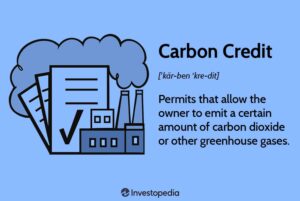Where Does Trade Carbon Credit Money Go?
Trade Carbon Credit Money Go
As more countries and companies set carbon-neutral goals, they are relying on the market to help them reduce their greenhouse gas emissions. This is where carbon credits come into play. A carbon credit is a financial instrument that represents the reduction or removal of one ton of carbon dioxide-equivalent (CO2e). The value of carbon credits varies depending on the location and type of project involved in their creation.
The voluntary carbon market has grown in recent years, driven by increased corporate net-zero goals and interest in meeting international climate goals outlined in the Paris Agreement to limit global warming to 1.5 degrees Celsius over preindustrial levels. The carbon credit buyers are companies looking to offset their own emissions or meet their own internal sustainability standards. But where does the money come from to purchase these carbon credits?

Some of the largest carbon credit buyers are states or cities with cap-and-trade markets. These regulations set an overall amount of CO2 a business can emit, and companies that emit more than their allotted emissions “cap” risk fines. So, to avoid those penalties, they buy trade carbon credits from other sources to make up the difference.
Where Does Trade Carbon Credit Money Go?
For example, the state of California has a cap-and-trade program that requires companies to reduce their emissions by 40 percent of what they were in 1990. If a company expects to emit more than the cap, it can sell its excess carbon credits in the compliance market.
In contrast, the voluntary carbon market allows farmers and landowners to earn income from the sale of their credits. This is because these projects capture and store carbon dioxide that would otherwise be emitted into the air, such as when a farmer grows a cover crop or a landowner plants trees on their property. The value of these carbon credits varies, but generally a farm or forestry initiative can sequester up to five tons of carbon per year, so the revenue potential is significant.
The carbon credit prices in the voluntary market also fluctuate, as the market is based on supply and demand. For example, some carbon credits are more valuable than others because of the environmental, social or economic impacts they deliver. The most valuable carbon credits are often those produced by community-based clean cookstove projects that bring life-saving energy to communities, for example.
As the carbon market evolves, buyers are demanding higher quality projects. That’s why it’s important to find a carbon verification agency that is accredited by the Verified Carbon Standard (VCS), which provides accounting methodologies, independent auditing and a registry system to verify these carbon credits. This makes the buyers feel confident that they’re buying a credit that is legitimate and that will actually help them reach their climate goals. Think of it as a surgeon’s medical credentials — you wouldn’t trust a doctor who didn’t complete his or her residency. That’s why at South Pole, we are committed to verifying our carbon projects in order to provide high-quality carbon credits to our buyers.